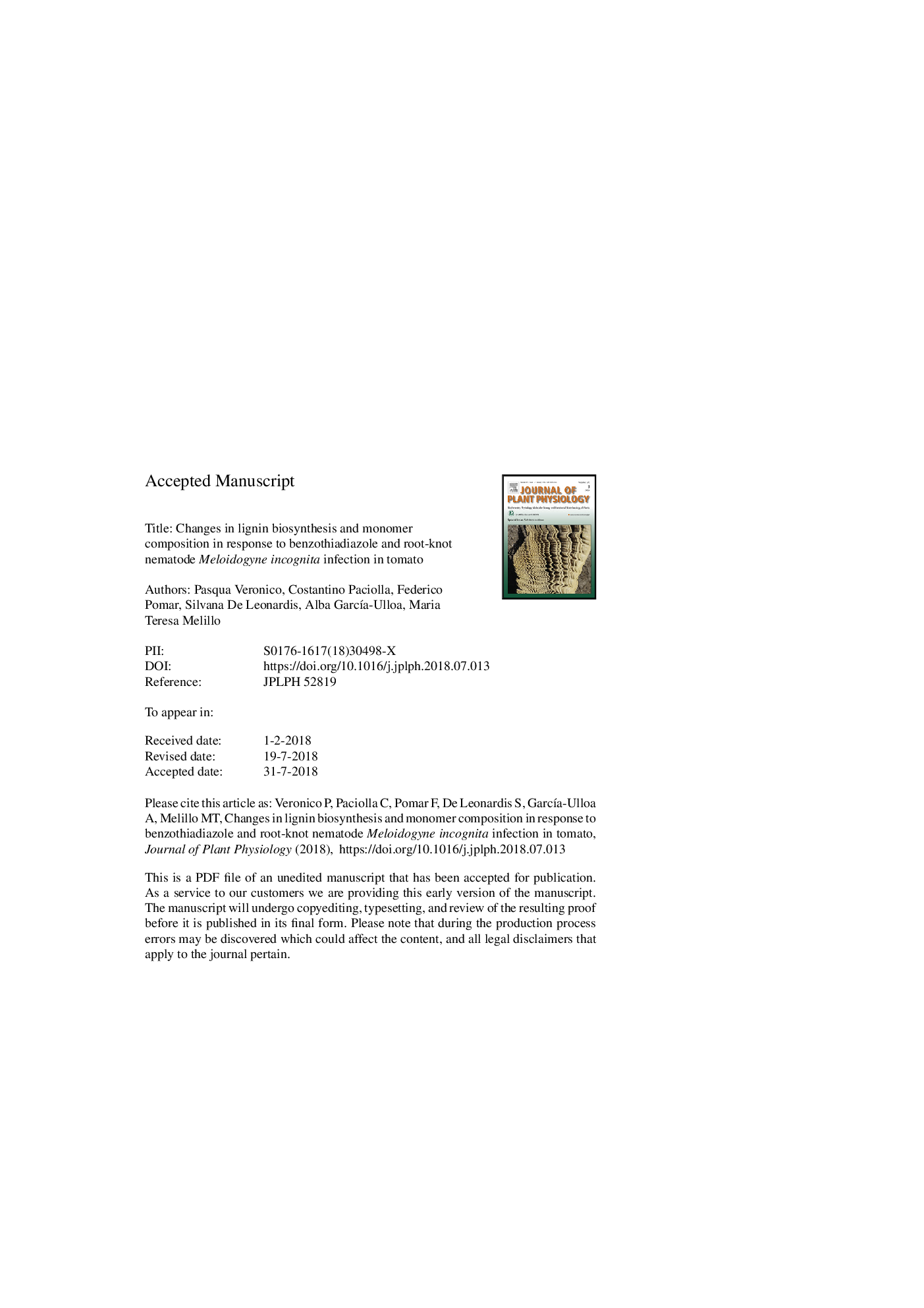| کد مقاله | کد نشریه | سال انتشار | مقاله انگلیسی | نسخه تمام متن |
|---|---|---|---|---|
| 8943783 | 1645206 | 2018 | 30 صفحه PDF | دانلود رایگان |
عنوان انگلیسی مقاله ISI
Changes in lignin biosynthesis and monomer composition in response to benzothiadiazole and root-knot nematode Meloidogyne incognita infection in tomato
دانلود مقاله + سفارش ترجمه
دانلود مقاله ISI انگلیسی
رایگان برای ایرانیان
کلمات کلیدی
موضوعات مرتبط
علوم زیستی و بیوفناوری
علوم کشاورزی و بیولوژیک
علوم زراعت و اصلاح نباتات
پیش نمایش صفحه اول مقاله

چکیده انگلیسی
Benzothiadiazole (BTH) acts as a priming agent in plant defence leading to a reduction in penetration and development of the root-knot nematode Meloidogyne incognita in susceptible tomato roots. Changes in lignin biosynthesis in the susceptible tomato cv. Roma following nematode infection and/or BTH treatment were investigated in comparison to the resistant cv. Rossol. Both untreated and BTH-treated susceptible infected roots (galls) showed an increased level of expression of lignin synthesis-related genes (PAL, C4H, HCT and F5H) at early times during infection (2-4âdays post inoculation). Peroxidase (soluble and cell-wall bound, POX) enzyme activities increased after inoculation with M. incognita and the priming effect of BTH treatment was evident at later stages of infection (7âdays post inoculation). As expected, the induction of PAL and POXs and lignin synthesis-related genes was faster and greater in resistant roots after infection. Histochemical analysis revealed accumulation of higher lignin levels at later infection stages in BTH-treated galls compared to untreated ones. Furthermore, the monomer composition of lignin indicated a different composition in guaiacyl (G) and syringyl (S) units in BTH-treated galls compared to untreated galls. The increase in G units made G/S ratio similar to that in the resistant genotype. Overall, lignin played a critical role in tomato defence to M. incognita in response to BTH.
ناشر
Database: Elsevier - ScienceDirect (ساینس دایرکت)
Journal: Journal of Plant Physiology - Volume 230, November 2018, Pages 40-50
Journal: Journal of Plant Physiology - Volume 230, November 2018, Pages 40-50
نویسندگان
Pasqua Veronico, Costantino Paciolla, Federico Pomar, Silvana De Leonardis, Alba GarcÃa-Ulloa, Maria Teresa Melillo,